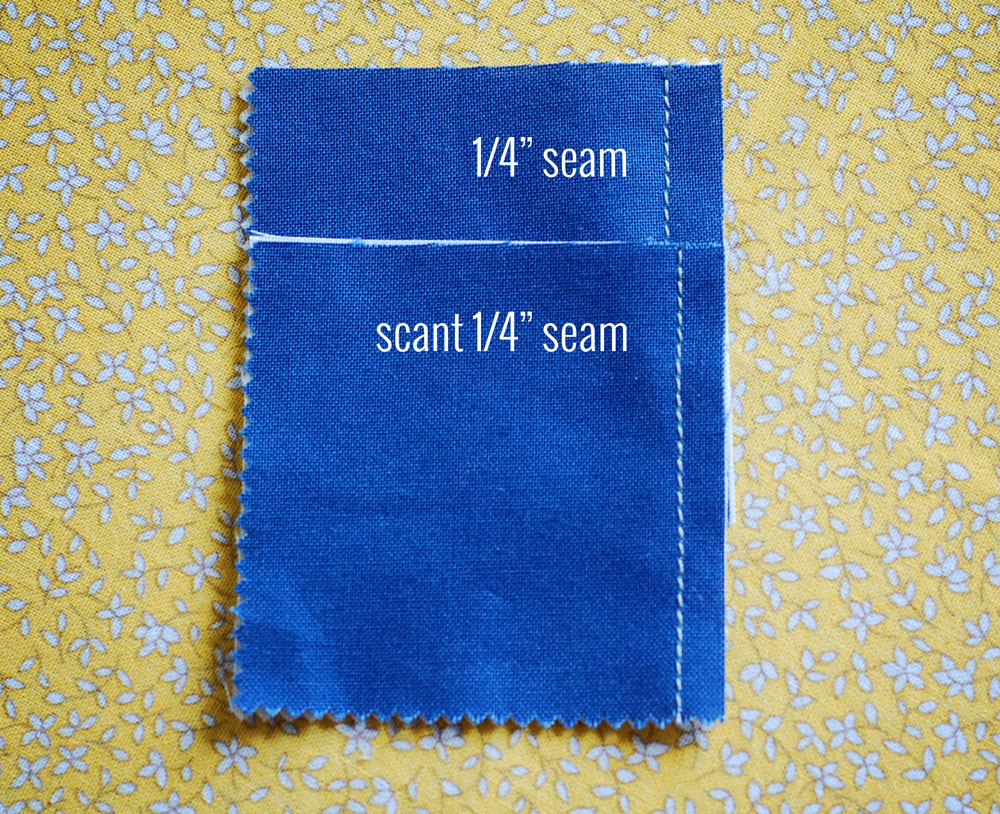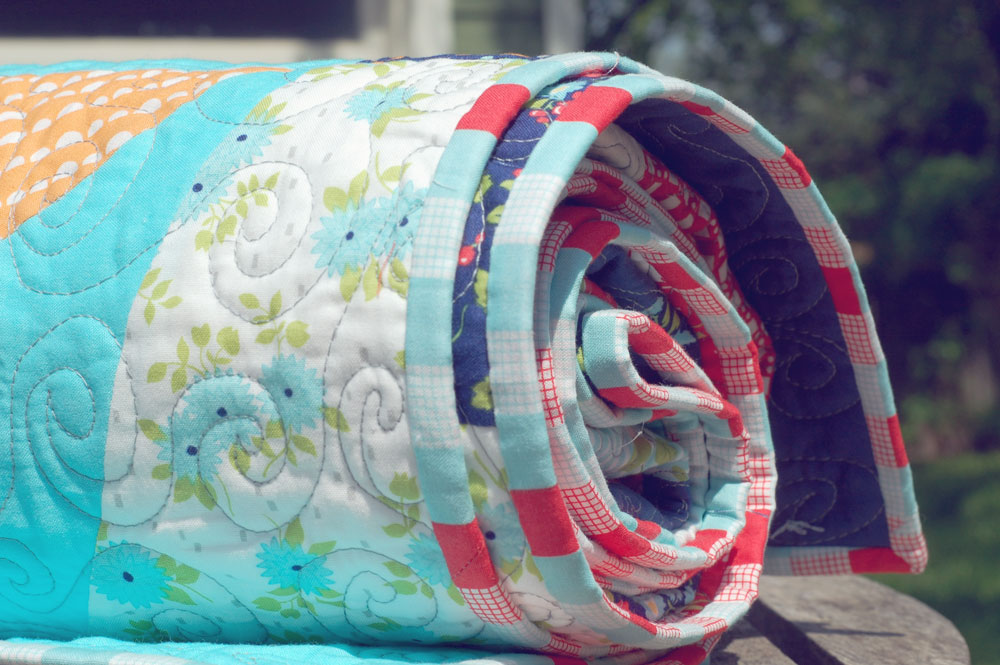Learn to Quilt: Quilting Definitions and Resources
This post is part of my Learn to Quilt series. You can find all related posts {here}.
Welcome to Lesson 2 in the Learn to Quilt series. This series is aimed at the beginner quilter so we are starting with the absolute basics, like “Basting? Isn’t that for turkeys?” Here is a list of definitions that you will come across in the quilting world.
DEFINITIONS
Scant 1/4” – We talked about the scant 1/4′ seam in Lesson 1 and I’ve included the photo below as a refresher. A scant 1/4′ seam is slightly less than a true 1/4″.
Basting – This is not just for turkeys! Basting is the process of adhering your quilt backing to your batting and your quilt top so you can quilt it. Basting can be done a variety of ways: by hand with a needle and thread, with quilter’s safety pins, with basting spray adhesive, with fusible batting, and the easiest way – by rolling the three layers onto a longarm frame. There are different reasons for using each method of basting, which I will cover in Lesson 8.
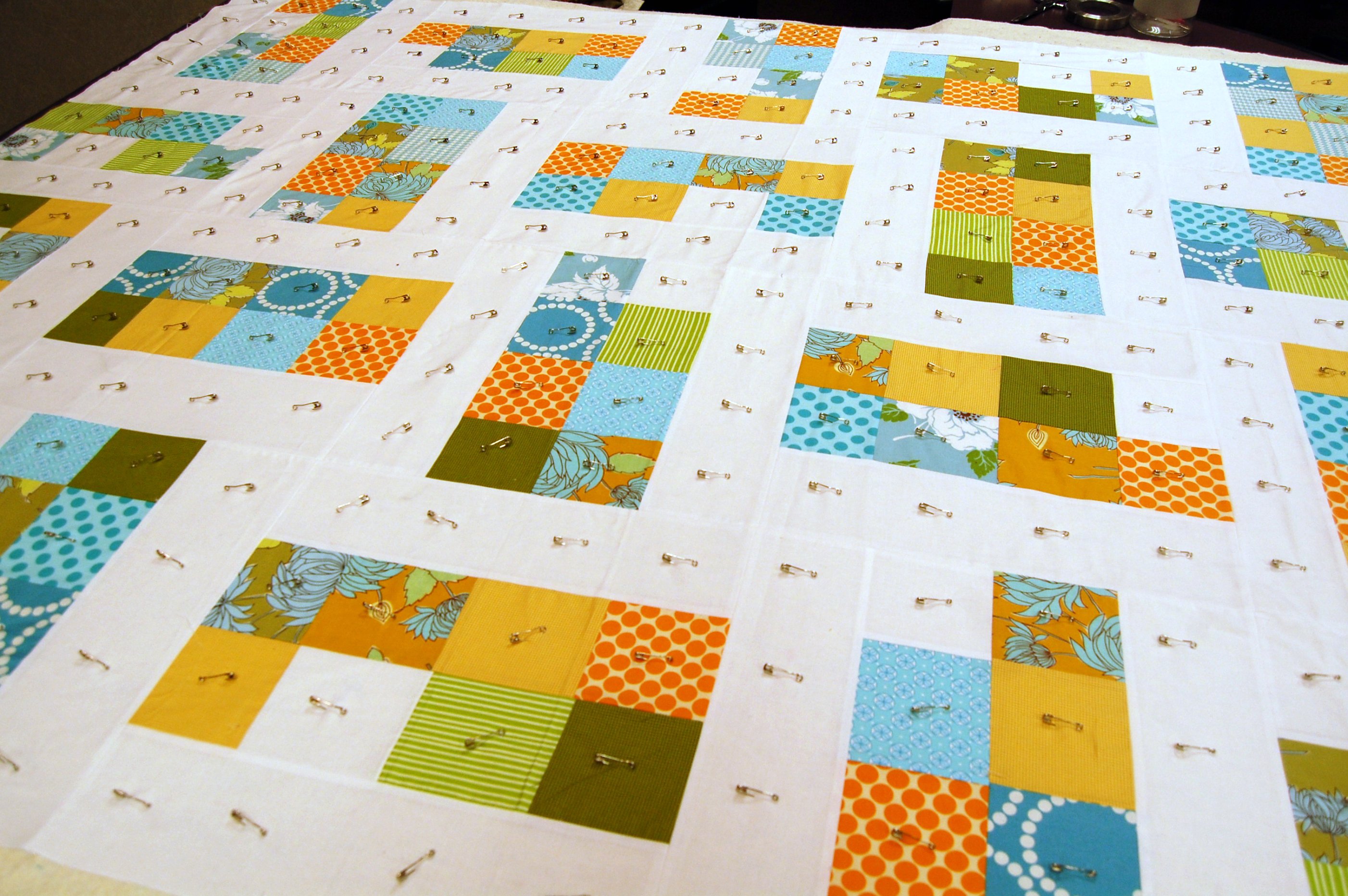
Basting with Safety Pins
Quilt Sandwich – Mmm. Lots of food talk in this lesson. A quilt sandwich is the term for your layers of backing, batting, and quilt top. The fabric is the bread and the batting is the filling.
Binding – This is the finishing touch on your quilt. The binding is the fabric that is sewn around the raw edges of the quilt to hold everything together and make it look finished (and pretty!). It’s like a frame for your quilt.
Quilt with Red + Aqua Checked Binding
Piecing – The simple act of sewing pieces of fabric together. All of the sewing you do to put your quilt top together is called piecing.
Quilting – This is the decorative sewing that holds your three layers together (backing, batting, and quilt top).
Block – A block is the basic unit that makes up the quilt. There are endless varieties of block designs.
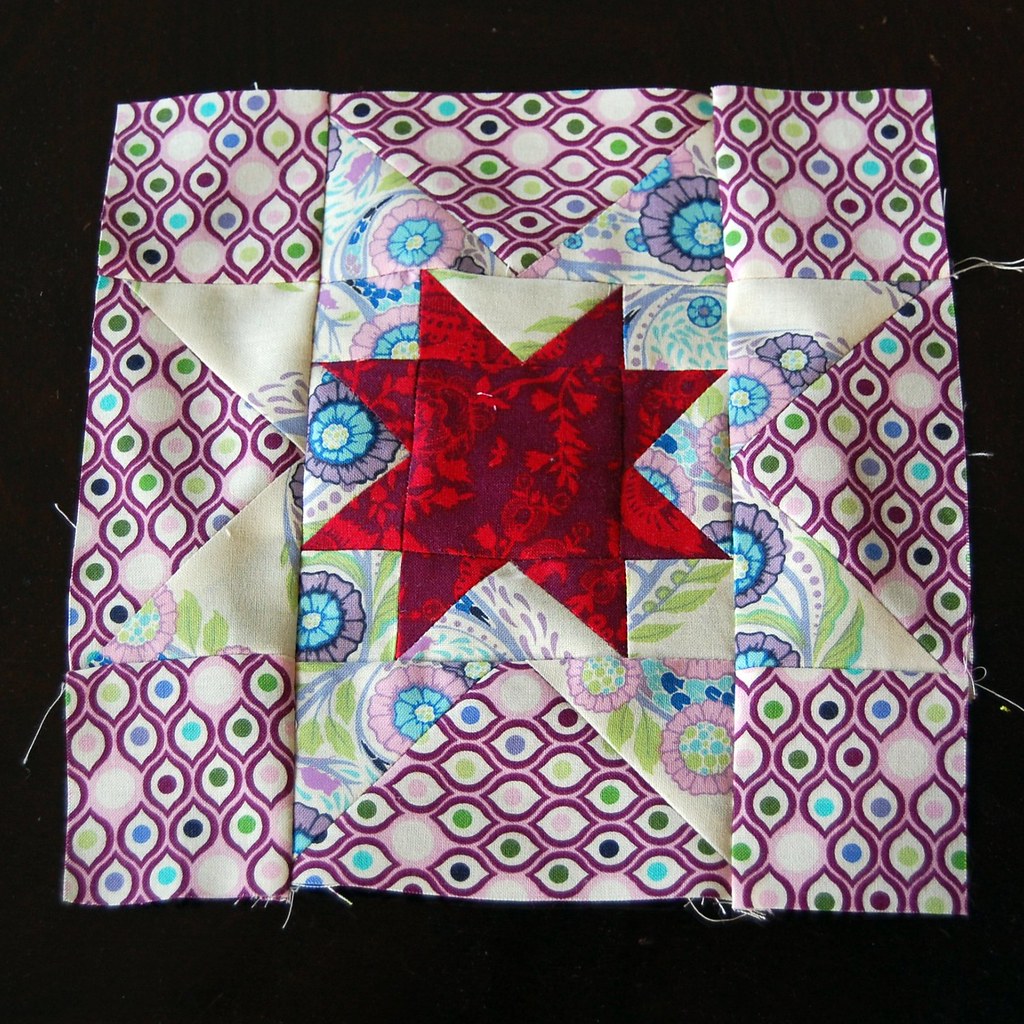
Quilt Block
Quilt back – This is very simply the fabric that goes on the back of your quilt.
Batting – Batting is the filler layer between your quilt top and your backing. There are many different kinds of batting, but the most often used is cotton or a cotton/poly blend.
Rotary Cutter – A rotary cutter is like a pizza slicer for fabric. It has an extremely sharp blade and is the only cutting tool you will need for quilting.
Points – Points are the spots where your quilt blocks meet up. Matching points is a skill you will want to master.
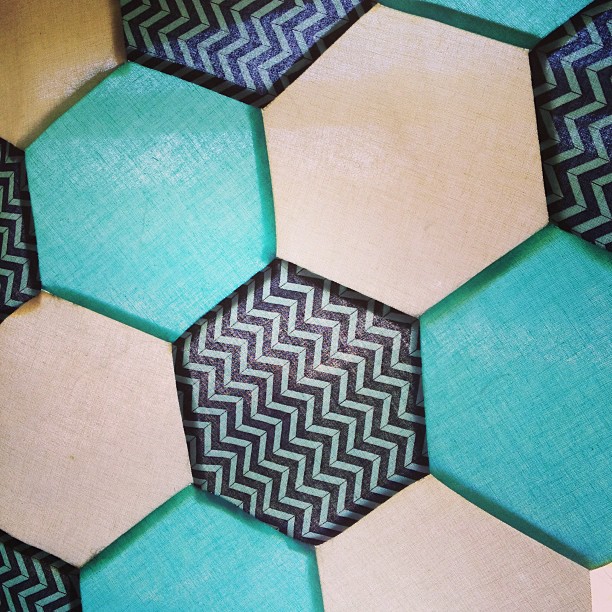
Easy to See Points in a Hexagon Quilt Top
Feed Dogs – These are the things that move your fabric under the foot.
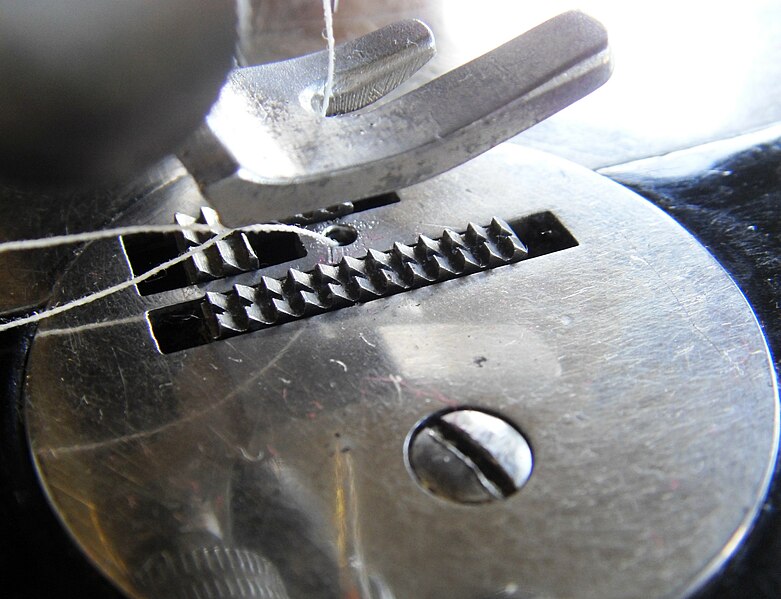
Feed Dogs
Free Motion – When you lower your feed dogs so that they no longer move the fabric for you, you have the freedom to move your fabric any direction you wish. This is called free motion, and is used for thread painting and quilting.
Selvedge – The edges of your fabric. One selvedge is typically printed with the manufacturer’s info and the other is a continuation of the fabric print.
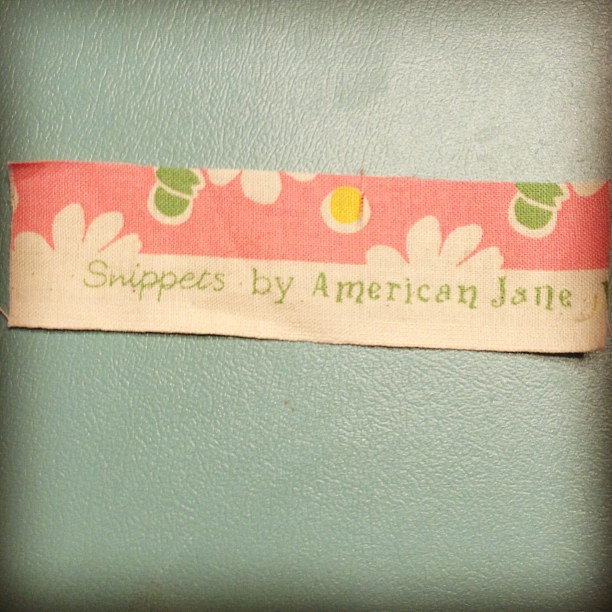
RESOURCES
There are endless resources for quilting so I’ve limited the list below to the ones that I personally use.
Moda Bake Shop – A website run by Moda Fabrics with hundreds of free, step-by-step tutorials.
Quiltville – Bonnie Hunter is a master of using fabric scraps and her website is full of tips and patterns.
Quilter’s Cache – Marcia Hohn has compiled a huge range of quilt block patterns (all free!).
Public library – Your local library branch will have a few basic sewing books and depending on the size of your town, maybe even some recent quilting books. It’s definitely worth checking out.
Half Price Books – This store is a great place to browse quilting books and buy them for a reasonable price. Even older books with dated fabrics can be an invaluable resource for patterns so don’t judge a book by its cover.
Flickr – Flickr is a photo sharing website with a huge quilting community. Start an account and share your projects. You can join groups and find online quilting bees and swaps on Flickr.
Etsy – Etsy is an online marketplace with lots of small shops selling every imaginable handmade item, vintage goods, and crafting/sewing supplies. Create an account and browse shops to find ones that carry fabric you like. Even if you don’t buy right away, add the shop to your list of favorites so you can keep up with their inventory.
Pinterest – Pinterest is the ultimate inspiration website. If you are online and reading blogs, the odds are very good that you already have a Pinterest account. If not, go create one ASAP. Check out my boards for inspiration.
Instagram – This is an iPhone app that is growing into my favorite place to chat and socialize “online” with other quilters. I describe it as Twitter for photos. You can see my Instagram feed here to get an idea of what it’s all about.
True Up – This website is the ultimate resource for all things fabric-related.
Your local quilt shop – This is the place to really get started. Go in and check out their class schedule, browse the fabric, meet the staff. Even if you do most of your fabric shopping online, your local shop is the place for notions and tools.
This is really just a drop in the bucket in terms of inspiration and resources. If you have any favorites, please share them in the comments.
See you next Monday for Lesson 3 – Learn to Quilt: Tools of the Trade.

